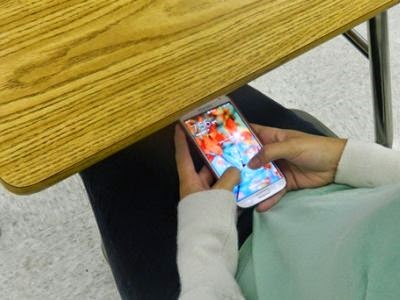
With even toddlers using social media tools and technology, schools, libraries, communities and parents understand how important it is to protect children from violence and exploitation.
However, schools’ cybersafety strategies aimed at achieving this goal are often limited in scope and subsequently fall short of the mark.
What’s missing, say some principals and cybersafety experts, is a whole-of-school approach that has strong involvement from school leadership and is built into the curriculum.
One organisation offering this solution is national charity, the Alannah & Madeline Foundation, which runs National e-Smart Week (4-8 September) - now in its third year.
Judi Fallon – a former educator with 35 years of experience as a school principal and a teacher – is the Foundation’s schools program manager.
Fallon told The Educator that the e-Smart initiative – now in its seventh year – reaches more than 2,500 schools, 60% of libraries and 200,000 students, but is most effective due to its unique place as a “comprehensive framework”.
“This framework that is divided into six different domains, covering effective school organisation, school policies, respectful communities, effective teacher practices, the eSmart curriculum and partnerships with parents and local communities,” she said.
“It’s a gap analysis, so as a principal, I would look at it and say ‘we’re doing that really well, but I don’t have a social media policy. I need to make sure that parents know that they can’t take photos of kids at the school and post it on social media without permission’.”
Berwick Lodge Primary School, located in Melbourne is an ambassador school of the Alannah & Madeline Foundation.
Principal, Henry Grossek, told The Educator that his school’s participation in the program serves the dual purpose of setting a positive example and improving education around important social issues.
“This is one way of contributing positively and simultaneously accessing valuable information to inform our joining total school community regarding DV and dealing with it,” he said.
“We have also decided to become school members of White Ribbon organisation - in addition to the same reasons as for joining A&M, the symbolism of joining with these organisations is powerful.”
Grossek cautioned that a crowded curriculum, coupled with burgeoning accountability requirements, can create barriers for schools seeking to successfully roll out positive social programs.
This is a point not lost on Fallon, who said that it is often the issues that school leaders don’t have time to think about, or are not able to effectively communicate, that make an important difference to how effective their policies are.
“It’s really about picking up on of those things that will really make sure we are educating not only our children but our staff and school communities as well,” she said.
“It’s also important that this framework has strong leadership involvement, because the buck really does stop at the top. The principal has to understand that if something goes wrong, it can fall back on them, so it’s essentially about risk mitigation.”
Mitigating online risks will be one of the topics discussed at Education Law Masterclass next Wednesday, which is being held at Dockside Darling Harbour in Sydney.
The conference’s agenda also includes advanced employment law for schools, workplace health and safety risk management, navigating family law and complying with the Disability Discrimination Act 1992.

